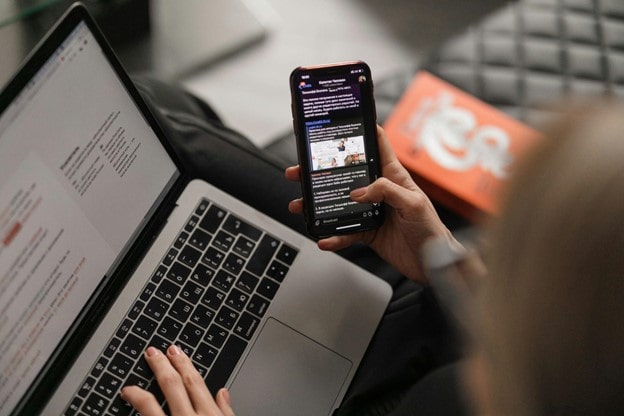Follow these guidelines to minimize time and frustration
Tip 1: Emails are for details, not requests
Talking to people can feel like a chore, especially when you have to give them work or bad news. Emails seem like a great alternative, however they are not.
Emails are best used for after action/conversation follow up to include details that might be forgotten or missed in your original meeting. Experts agree that conveying a message via email omits ~90% of the elements of human communication. In fact the Harvard Business Review says that a Face-to-Face request is 24 times more successful than an email.
Positive Example:
Hi Fred,
We talked about the Widget that Client X wants to roll out. As discussed please have a first draft of the plan done by Friday June 10 so that we have time to review and edit before the presentation on June 15th. Please make sure to include A,B,C, items and use our new product rollout workflow.

Look at how the discussion was done in person and an email was sent to follow up with details. This makes it clear to everyone what is expected. This also leaves open the possibility of your employee replying to this email for clarification and updates. Ultimately this will help you save time and confusion.
Tip 2: Emails should ALWAYS be Neutral/Positive in tone
When you write an email, it gets read by a person. They read it in their head the way they are feeling OR the way that they believe you feel. We all have a bias towards negativity on occasion. All emails should be neutral or positive in tone to minimize the risk that the reader will take it badly.
It's doubly true that tone matters when you are conveying non-positive news. HR/Marketing/C-Suite companywide emails are normally scrutinized to ensure that tone doesn't add a layer of negativity; you too may want to try reading your email as though you were the recipient before hitting "Send"
Positive Example:
Hi Team,
As mentioned in our Team stand-up, Lani had has turned in her two-week notice and will be leaving us on October 8th. She has agreed to transition her current work to each of you and will be spending the next two weeks making this as smooth as possible. We will miss her great attitude and attention to detail.
If you have any questions or concerns please come to me first so we can discuss. I recognize that the additional workload may be burdensome and I will keep you informed as we bring a new team member up to speed as quickly as possible.

Here, the manager is following up regarding bad news conveyed in person earlier. The email is Neutral/Positive in tone without making light of the issue. It gives a basic overview of the plan, an acknowledgement that it may cause short-term hardship, and reassurance that the hardship is temporary.
Tip 3: Jokes and sarcasm do not work in emails, even at the team level
Managers and employees can be friends outside of work. However, that does not mean that official communications should include sarcasm or jokes. You may think: “Whats the harm?” The harm can be anything from “unclear expectations” to “Workplace Harassment”.
As mentioned earlier, tone is very hard to read via text and a small joke can turn a simple email into a confusing or offensive work communication.
Negative Example:
Dear Team,
Great work! Last quarters numbers were way up. Except for Dillon who had a baby, thanks Dillon!
I want to see everyone work just as hard this quarter, hopefully Dillon will be back up to full strength and we can win that #1 Team spot again!

With no context for this email what would someone think? Is Dillon a friend of the manager? Is having a baby a bad thing? It may very well be that Dillon and the manager are great friends but an email like this, even though it's mostly positive, can have a lasting effect on the rest of the team. What if another employee does not know that the manager and Dillion are close friends and reads this as “Having kids in this company is bad and you will be called out by Management”?
All jokes and sarcasm should be kept to a minimum to help curb miscommunication.
Tip 4: Give the most important information first, fill in details later
The biggest issue with email is that it is overused to the point that many employees simply glance at the first paragraph, decide if they should keep reading, and most likely move on to the next.
Emails are not letters from friends, they can be spam, advertisements, announcements, automated/generated, ccs to all - or they can contain important, needed information. We make split-second decisions on whether to actually slow down and read the entire email. If the beginning doesn't catch our attention we are much less likely to read the rest.
Negative Example:
Dear Linda,
How was your vacation? I hope it went great. I remember the first time I went to Cancun it was just a few cottages and an empty beach - quite different from now, right?
While you were gone we assigned multiple people to cover your clients and they mostly were very successful. Please make sure that you thank them and catch up this week in case you missed anything.
Also, attached is an email thread between myself and one of our vendors. Please review.

It's human nature to want to start with pleasantries when communicating with another person. Unfortunately, email fatigue and top skimming might cause Linda to miss the most important part of this email.
In addition, the manager gives Linda one task and then includes a separate task with no context at the end. It would have been better for the manager to talk to Linda in person regarding this second task and following up with the attachment that contained the email thread.
Tip 5: To, CC, BCC, Reply All – know your fields!
To: Include the target of the email. The person/people who are expected to read the email and act upon it if necessary.
CC: CC stands for carbon copy, back from the days when there were literal copies of memos that went to other people. Include people who need to be aware of the topic in the email but are not expected to have ownership of the issue.
The operative word here is "need". If the CC field were used more judiciously, people would have a lot less non-relevant non-actionable mail in their in-box. CC should not be used to CYA.
BCC: Use on rare occasions. BCC (blind carbon copy) people who need to be aware of a topic but the targets of that topic (the TO: field) are not meant to know that. BCC recipients tend to be other high level managers and/or HR and are bcc'd to help create a paper trail. BCC members are not responsible for the topic and if they have questions or comments they should reply to the sender only.
Reply All: Do you really need everyone included in the email thread to read your response?
